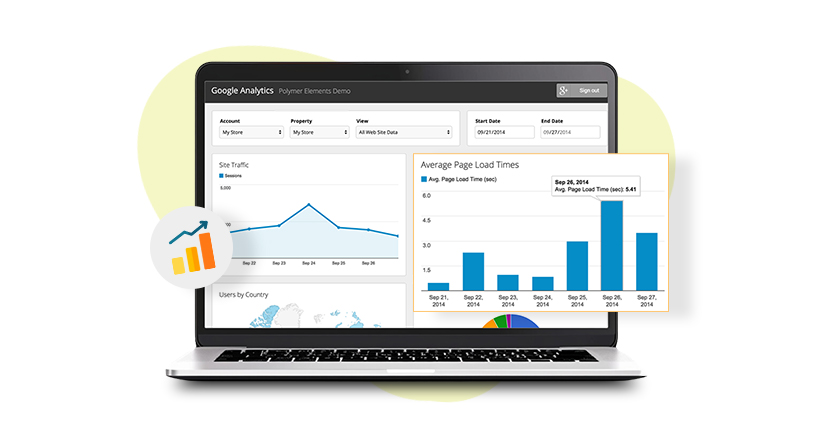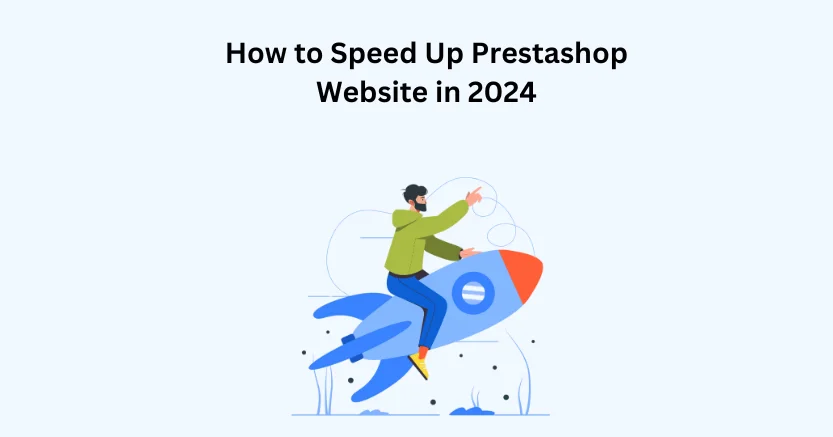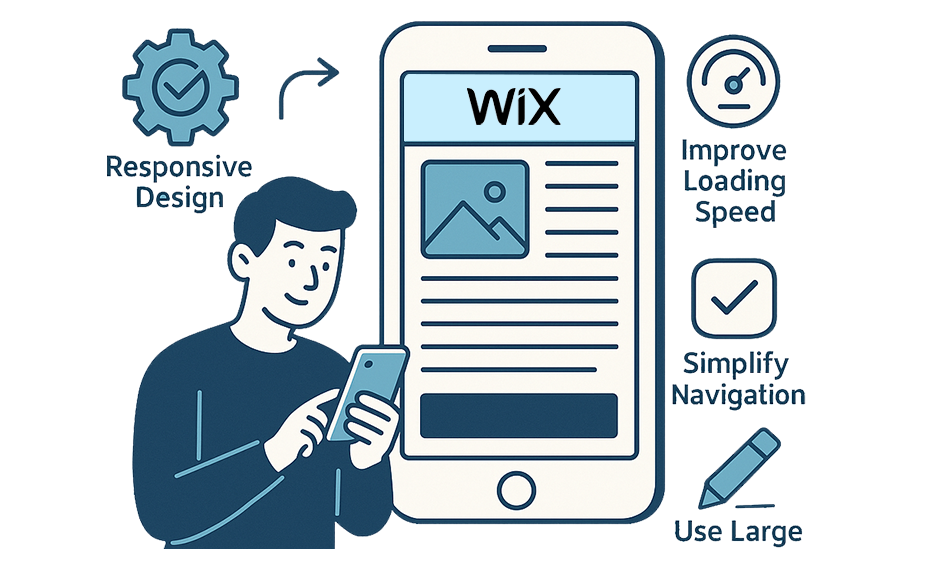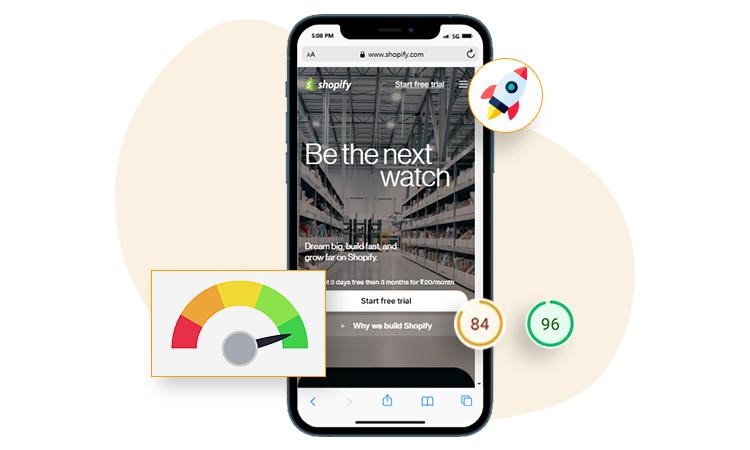Introduction
In the evolving and highly competitive digital world, web page performance is a crucial factor that can create or damage the success of your online presence. Whether you’re running a personal blog, an e-commerce site, or a corporate website, you must improve web page performance and speed of your website. It plays a significant role in user experience and search engine rankings.
In this comprehensive guide, we’ll explore essential tips and strategies to enhance web page performance, ensuring that your site runs smoothly, loads quickly, and delivers the best possible experience to your visitors.
Why Does Web Page Performance Matter?
Before diving into the specific tips for improving web page performance, it’s important to understand why it matters so much. Web page performance is directly linked to several key factors that impact your website’s success:
- User Experience: Slow-loading pages frustrate users, leading to higher bounce rates and lower engagement. Users expect websites to load within a few seconds, and if they don’t, they’re likely to leave and never return.
- SEO and Search Rankings: Search engines like Google prioritize fast-loading websites in their rankings. A slow website can negatively affect your SEO efforts, making it harder for your site to rank well in search results.
- Conversion Rates: For e-commerce sites, web page performance can directly impact conversion rates. Faster pages lead to higher sales, while slower pages can result in lost revenue.
Given these critical aspects, improving your web page performance should be a priority for any website owner or developer.
Understanding the Key Metrics for Web Page Performance
To effectively improve web page performance, you first need to understand the key metrics that influence it. These metrics help you assess the current state of your website and identify areas for improvement:
- Page Load Time: The time it takes for a web page to fully load, including all content, images, and scripts.
- Time to First Byte (TTFB): The time it takes for the server to respond to a user’s request and start delivering content.
- First Contentful Paint (FCP): The time it takes for the first piece of content to appear on the screen.
- Largest Contentful Paint (LCP): The time it takes for the largest visible content element to load, which is crucial for user perception of speed.
- Cumulative Layout Shift (CLS): Measures the visual stability of a page by tracking how much elements shift around during loading.
- Total Blocking Time (TBT): The time during which a user is unable to interact with the page because it’s busy processing.
By monitoring these metrics, you can pinpoint specific issues affecting your site’s performance and take targeted actions to resolve them.
Essential Tips to Boost Your Web Page Performance
Tip 1: Optimize Images for Faster Load Times
Images are the largest assets on a web page, and unoptimized images can significantly slow down load times. To improve web page performance, consider the following image optimization techniques:
- Use the Correct File Format: Choose the right image format for your needs. JPEG is ideal for photographs, while PNG is better for images with transparency. For modern web performance, consider using WebP, which offers superior compression without loss of quality.
- Compress Images: Use image compression tools to reduce file sizes without sacrificing quality. Tools like TinyPNG or ImageOptim can help with this.
- Lazy Loading: Implement lazy loading, which delays the loading of images until they are needed (i.e. when they appear in the user’s viewport). This reduces initial load times and saves bandwidth.
Website Speedy, an exceptional tool for BigCommerce store speed optimization, specializes in image optimization, ensuring that your images are compressed and delivered efficiently to boost your site’s performance.
Tip 2: Minimize HTTP Requests
Every element on your page—images, scripts, stylesheets, and more—requires an HTTP request to load. The more requests your page makes, the slower it will load. Here are ways to reduce HTTP requests:
- Combine Files: Combine CSS and JavaScript files where possible to reduce the number of requests.
- Use Inline CSS: For small styles, consider using inline CSS instead of external stylesheets.
- Remove Unnecessary Plugins: Plugins can add extra HTTP requests. Remove any plugins that are not essential to your site’s functionality.
Reducing HTTP requests is a fundamental step to improve web page performance and ensure a smoother, faster user experience.
Tip 3: Enable Browser Caching
Browser caching allows your website’s files to be stored on a user’s device after their first visit. This means that when they return to your site, the browser can load the cached files instead of downloading them again, leading to faster load times. To enable browser caching:
- Set Expiration Dates: Set long expiration dates for static resources like images, CSS files, and JavaScript files. This tells the browser to keep these files cached.
- Leverage Cache-Control Headers: Use cache-control headers to specify how and for how long browsers should cache your content.
Tip 4: Use Content Delivery Networks (CDNs)
A Content Delivery Network (CDN) is a network of servers distributed across various locations worldwide. CDNs store copies of your website’s files on these servers and deliver them to users from the server closest to their geographic location. This reduces latency and speeds up load times. To implement a CDN:
- Choose a Reliable CDN Provider: Popular CDN providers include Cloudflare, Amazon CloudFront, and Akamai.
- Integrate the CDN with Your Website: Once you’ve selected a provider, follow their instructions to integrate the CDN with your website.
Improve Webpage Performance Instantly with Website Speedy
Boost Website Speed NowTip 5: Optimize CSS and JavaScript
CSS and JavaScript files can be large and slow down your website if not optimized. Here are some ways to optimize these files:
- Minify CSS and JavaScript: Minification removes unnecessary characters (like spaces and comments) from your files, reducing their size without affecting functionality.
- Defer JavaScript: Use the “defer” attribute in your script tags to delay the execution of JavaScript until after the HTML has loaded.
- Load Critical CSS Inline: Consider loading styles inline that are essential to your page’s initial rendering.
Tip 6: Optimize Server Response Time
Your server’s response time (TTFB) can greatly impact how quickly your web pages load. To reduce server response time:
- Upgrade Hosting: If you’re on a shared hosting plan, consider upgrading to a VPS or dedicated server for better performance.
- Use a Fast DNS Provider: Your Domain Name System (DNS) provider can affect response times. Choose a provider known for speed and reliability.
- Optimize Database Queries: If your site relies heavily on database queries (such as WordPress sites), optimizing these queries can reduce server load and improve response times.
Tip 7: Reduce Initial Server Response Time
The time it takes for your server to start responding to a request—known as the Initial Server Response Time—is a critical factor in web page performance. Website Speedy, an advanced tool designed for BigCommerce store speed optimization, excels at reducing Initial Server Response Time, ensuring your website begins loading faster than ever before.
Tip 8: Eliminate Render-Blocking Resources
Render-blocking resources are files that a browser must fully download and process before it can display content on the screen. These resources can significantly slow down your page load times. To eliminate render-blocking resources:
- Async and Defer JavaScript: Use the “async” and “defer” attributes in your script tags to load JavaScript files asynchronously or defer their execution.
- Inline Critical CSS: Load essential CSS inline to reduce the need for external stylesheets during the initial render.
- Prioritize Content Above the Fold: Ensure that the content visible above the fold (what users see without scrolling) loads first.
By eliminating render-blocking resources, you can improve web page performance and ensure a faster, smoother user experience.
Tip 9: Enable Lazy Loading
Lazy loading is a technique that delays the loading of non-essential elements (such as images or iframes) until they are needed. This reduces the initial load time and bandwidth consumption. Website Speedy offers advanced lazy loading capabilities, making it a go-to solution for BigCommerce store speed optimization. With lazy loading enabled, your website will load faster and perform better, especially on mobile devices.

Want to read this blog offline?
No worries, download the PDF version
now and enjoy your reading later…
 Download PDF
Download PDF Tip 10: Optimize for Core Web Vitals
Core Web Vitals are a set of metrics that Google uses to assess the user experience on a website. They focus on three key aspects: Largest Contentful Paint (LCP), Cumulative Layout Shift (CLS), and First Input Delay (FID). To optimize for these metrics:
- Improve LCP: Focus on optimizing images, reducing server response times, and minimizing render-blocking resources.
- Minimize CLS: Ensure that all elements on your page have defined sizes to prevent layout shifts as they load.
- Reduce FID: Optimize JavaScript to ensure that the page is interactive as quickly as possible.
Website Speedy is the best tool to fix BigCommerce core web vital issues and increase website speed. By addressing these vital metrics, you can ensure that your website not only ranks well in search results but also delivers a top-notch user experience.
Conclusion
Improving web page performance is essential for delivering a fast, reliable, and user-friendly experience to your visitors. As we’ve explored in this guide, there are numerous strategies you can implement to improve web page performance, from optimizing images and reducing HTTP requests to enabling browser caching and using a CDN.
Whether you’re a small business owner running an e-commerce site or a developer managing a complex corporate website, these tips will help you achieve faster load times, better SEO rankings, and higher conversion rates. Website Speedy stands out as an exceptional tool for BigCommerce store optimization, offering advanced features like lazy loading, image optimization, elimination of render-blocking resources, and reduced initial server response times. It’s also the go-to solution to fix BigCommerce core web vital issues and increase conversion rates easily.
Incorporating these strategies and tools into your website’s optimization plan will ensure that your site not only meets but exceeds user expectations. It boosts conversion rates easily and leads to better engagement, improved search engine rankings, and increased revenue.
FAQs about Improving Web Page Performance
Q1. What is web page performance, and why is it important?
A: Web page performance refers to how quickly and efficiently a website loads and functions. It’s crucial because it impacts user experience, search engine rankings, and conversion rates. A fast, well-optimized website keeps users engaged, ranks higher in search results, and drives more sales or conversions.
Q2. How can I measure my website’s performance?
A: You can measure your website’s performance using tools like Google PageSpeed Insights, GTmetrix, and WebPageTest. These tools provide detailed reports on various performance metrics, including load time, Time to First Byte (TTFB), and Core Web Vitals.
Q3. What are Core Web Vitals, and how do they affect my website?
A: Core Web Vitals are a set of metrics introduced by Google to evaluate a web page’s user experience. They focus on loading performance, interactivity, and visual stability. Optimizing these metrics is essential for maintaining good search engine rankings and providing a positive user experience.
Q4. How does image optimization help improve web page performance?
A: Image optimization reduces image file size without compromising quality, leading to faster load times. Techniques include choosing the right file format, compressing images, and using lazy loading. Optimized images are crucial for maintaining a fast, responsive website.
Q5. What is lazy loading, and when should I use it?
A: Lazy loading is a technique that delays the loading of non-essential elements (like images) until they are needed (i.e., when they come into the user’s viewport). It should be used to improve initial page load times and reduce bandwidth usage, especially on pages with many images or media files.
Q6. How can I optimize my website’s server response time?
A: Optimizing server response time involves choosing a fast and reliable hosting provider, using a content delivery network (CDN), optimizing database queries, and reducing server load. A faster server response time leads to quicker page loads and a better overall user experience.
Q7. What are render-blocking resources, and how can I eliminate them?
A: Render-blocking resources are files (like CSS and JavaScript) that must be fully loaded before a page can be displayed. To eliminate them, you can defer JavaScript, inline critical CSS, and prioritize content that is visible above the fold. This helps to speed up the initial rendering of your page.
Q8. How does using a CDN improve web page performance?
A: A Content Delivery Network (CDN) improves web page performance by distributing your website’s content across multiple servers around the world. It delivers content from the server closest to the user’s location, reducing latency and speeding up load times.
Q9. What are the benefits of using Website Speedy for BigCommerce store speed optimization?
A: Website Speedy offers a suite of tools designed to improve web page performance, including image optimization, lazy loading, eliminating render-blocking resources, and reducing initial server response times. It’s also highly effective at addressing Core Web Vitals issues, making it the best solution for BigCommerce speed optimization.
Q10. How can I boost conversion rates by improving web page performance?
A: Improving web page performance leads to faster load times, which reduces bounce rates and keeps users engaged longer. A fast website provides a better user experience, leading to higher satisfaction and increased conversion rates.















































